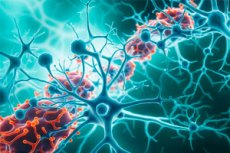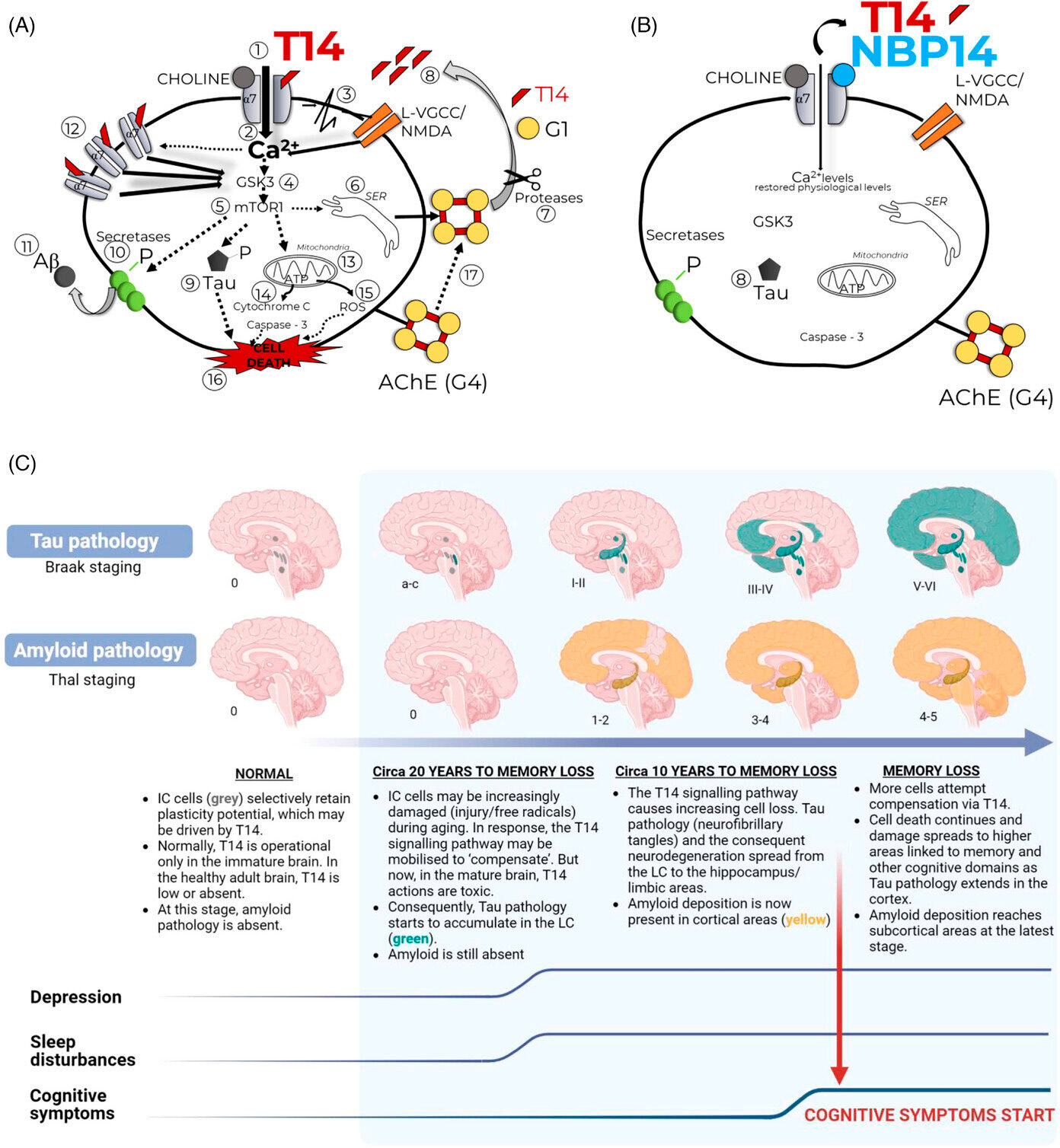
一个由临床医生和神经科学家组成的国际团队发表了一篇关于神经退行性疾病过程的新综述论文。他们的研究成果探索了淀粉样蛋白形成之前的机制,包括一种促进这一过程的关键神经化学物质。
该论文发表在《阿尔茨海默病与痴呆症》杂志上,重点研究了等树突核,这是一组不同于其他脑细胞的神经元,此前已发现在阿尔茨海默病(AD)中特别脆弱。
作者承认淀粉样蛋白是晚期AD的一个重要因素,但指出这些神经元在早期并不存在。如果这些脆弱的神经元在成年期受到损伤,它们会启动一种反应机制来应对。这种机制通常促进胎儿和早期生命中的神经元生长,但在成年期却有害。
这篇综述描述了驱动这一过程的关键分子是具有生物活性的14肽T14,它选择性地激活一个目标受体。在成熟的大脑中,T14非但不能恢复正常功能,反而会导致神经元死亡,并引发一个负面雪球效应,随着时间的推移,雪球效应会越来越强。
等树突核位于大脑深处,负责觉醒和睡眠/觉醒周期,与记忆等高级功能无直接联系。因此,退化过程可以持续进行,且无明显症状,直到损伤扩散到负责认知的区域。
论文提出的解释可以解释从神经元丢失的出现到认知障碍的出现长达10至20年的延迟。
该评论报告称,T14 可以在 AD 的早期阶段检测到,这可能作为神经退行性疾病发生的症状前指标,因此可以开发为生物标志物。

此外,作者还描述了T14的环化形式NBP14如何阻断T14的作用。NBP14已被证明能够预防AD小鼠模型中的记忆障碍,其作用机制已在多项研究中得到证实,包括对人类脑组织的尸检研究。因此,NBP14可能成为一种新的治疗策略的基础。
这种新方法提供了重要的发现,可能对阿尔茨海默病的早期诊断和治疗产生重大影响,凸显了进一步研究该领域的重要性。

